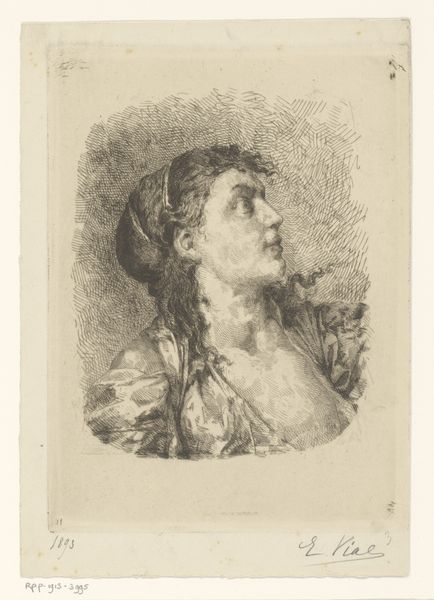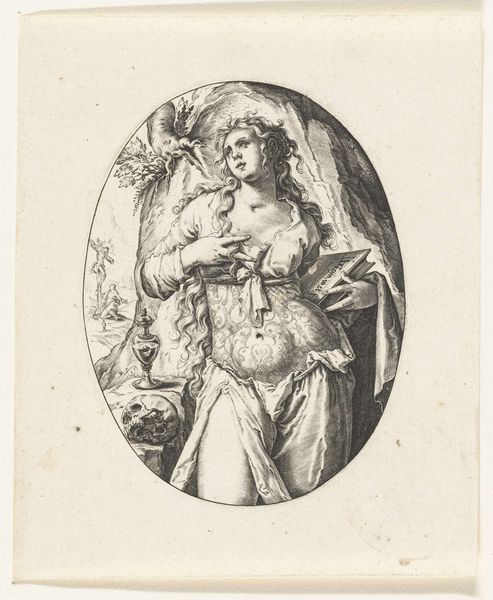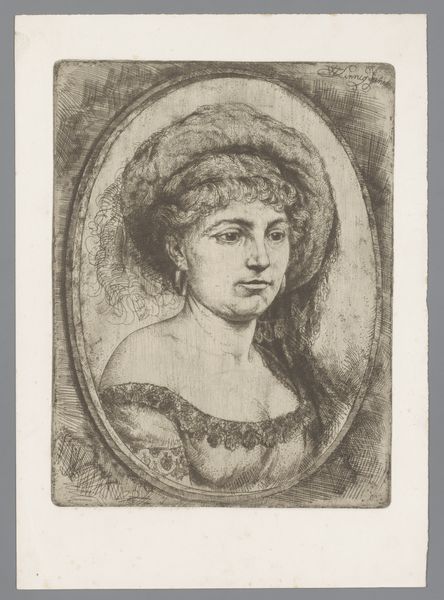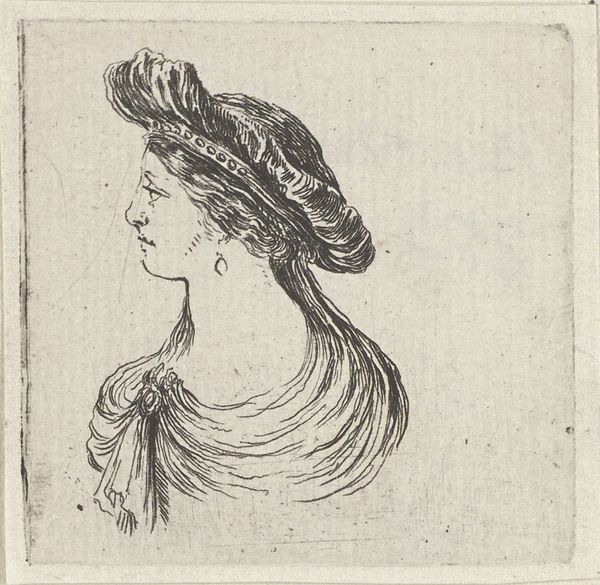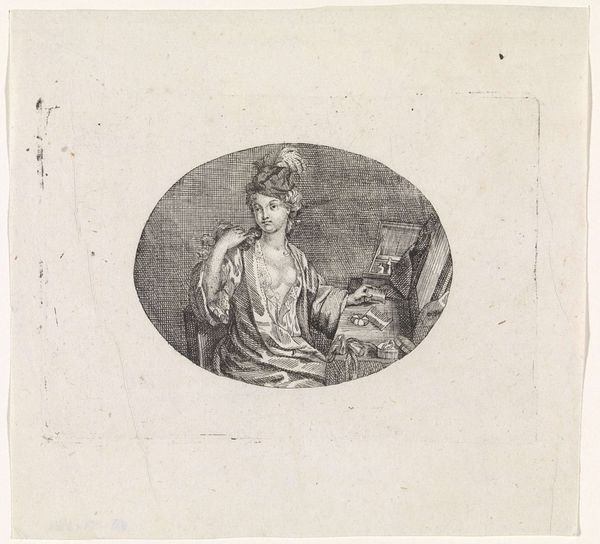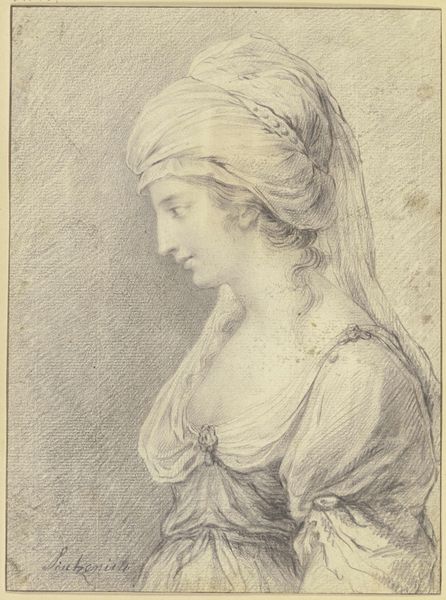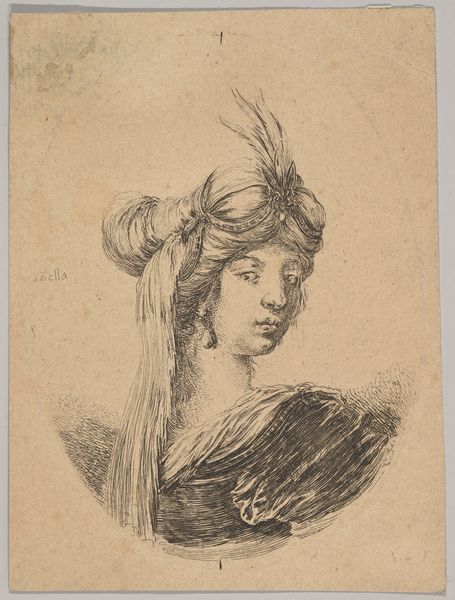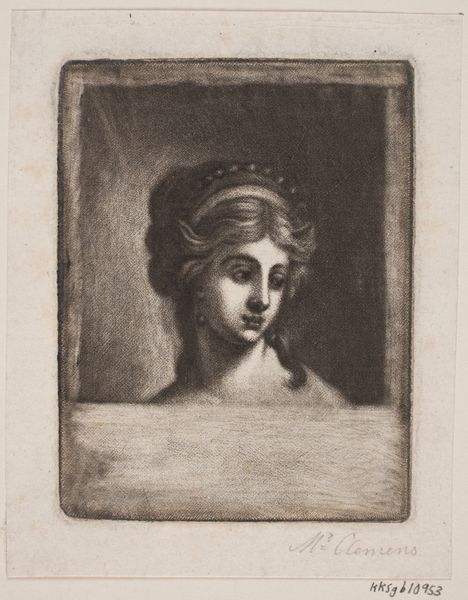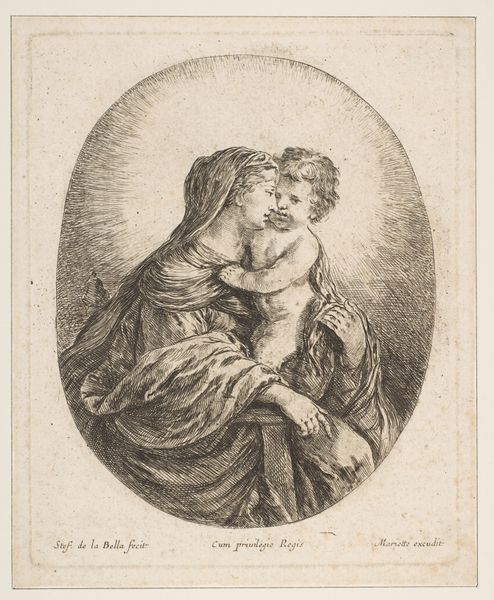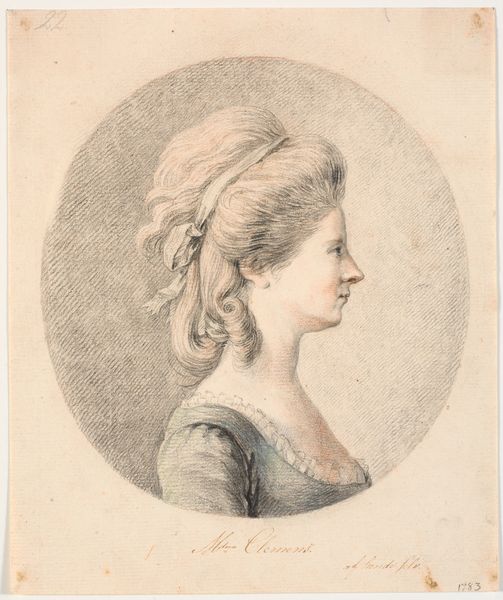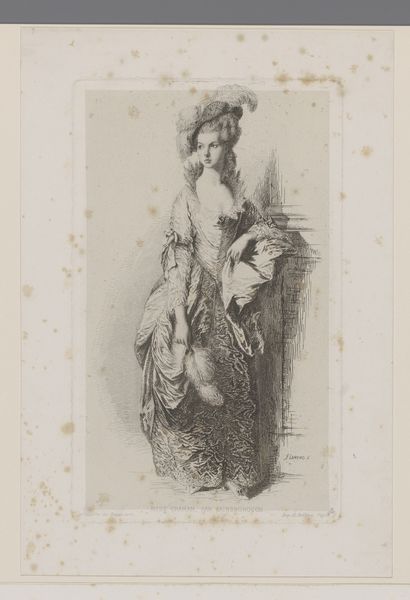
print, etching
#
portrait
#
pencil drawn
# print
#
etching
#
figuration
#
academic-art
#
realism
Dimensions: height 310 mm, width 241 mm
Copyright: Rijks Museum: Open Domain
Curator: Here we have an etching by Willem Linnig the Younger, created sometime between 1880 and 1890. It's called "Portrait of an Unknown Woman." Editor: My first impression is one of almost dreamlike opulence, with the monochrome print giving a delicate and refined ambiance. It speaks to an era obsessed with capturing its own image. Curator: Indeed. Note the oval composition—a traditional form. And consider the academic-art approach reflected in the woman's idealization and careful rendering through meticulously hatched lines. Observe, too, the realism employed, even if we don't know this sitter's specific identity. Editor: What is striking, however, is that for a society grappling with profound gender inequalities, these portraits were one of the few avenues by which women, usually from wealthy social circles, could enter the public record. Although through a male gaze, we are invited to ponder her narrative. The print becomes an act of claiming presence. Curator: Perhaps, but it's difficult to say definitively how much agency the subject really had. One can consider it more in terms of a negotiation. And in purely formal terms, the rendering is compelling—consider the balance between areas of dense and sparse etching, guiding the eye around the composition and maintaining tonal consistency. The pearls around her neck subtly accentuate her throat while adding highlights, creating a focal point. Editor: Precisely! Jewelry operates not only as adornment but also as a conspicuous display of social standing, mirroring how fashion reinforced stringent class barriers during that time. That is an observation far beyond the aesthetic of realism on display. It tells of social hierarchies. Curator: So, in appreciating Linnig's work here at the Rijksmuseum, we’re viewing a skilled artistic representation of its era—a testament to form and artistic skill that simultaneously reflects its cultural context. Editor: Yes, seeing art this way challenges us to appreciate the aesthetics but to read critically what is presented before us as a testament and artistic record of times that sought ways of excluding marginalized voices.
Comments
No comments
Be the first to comment and join the conversation on the ultimate creative platform.
